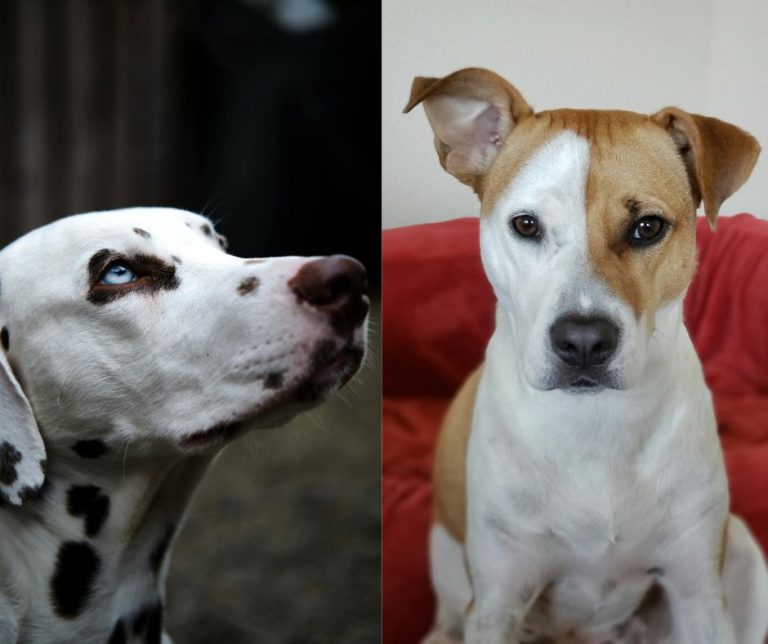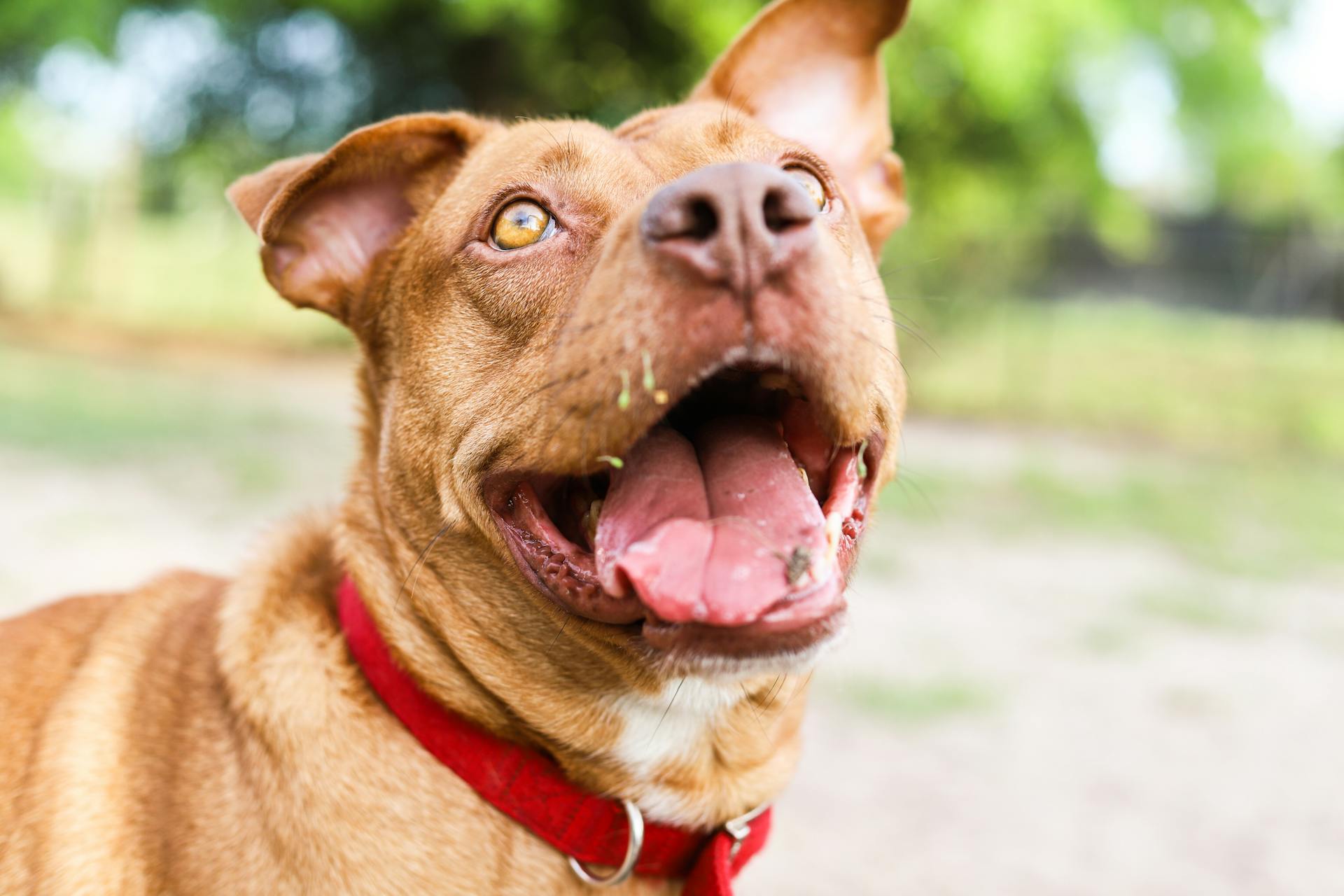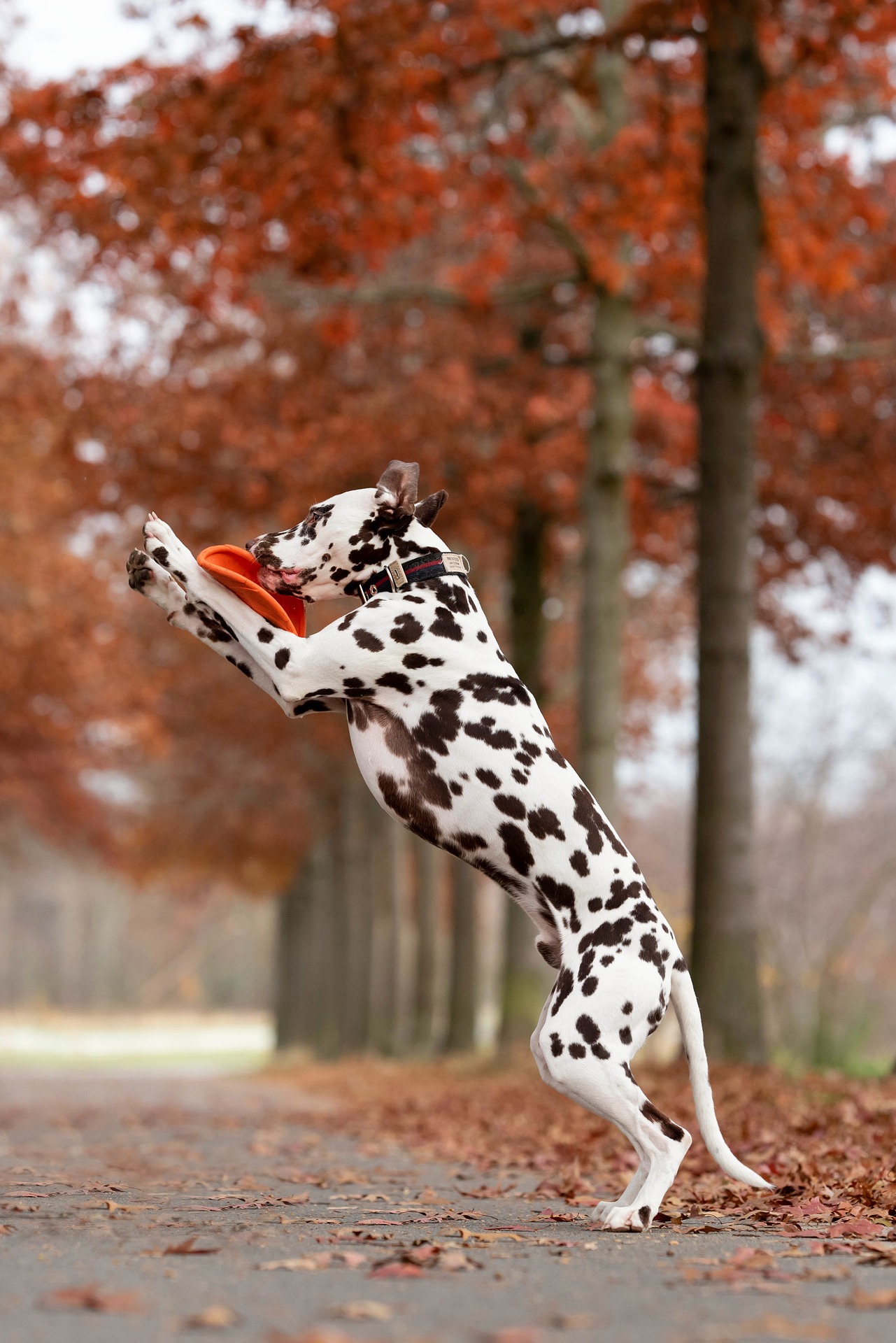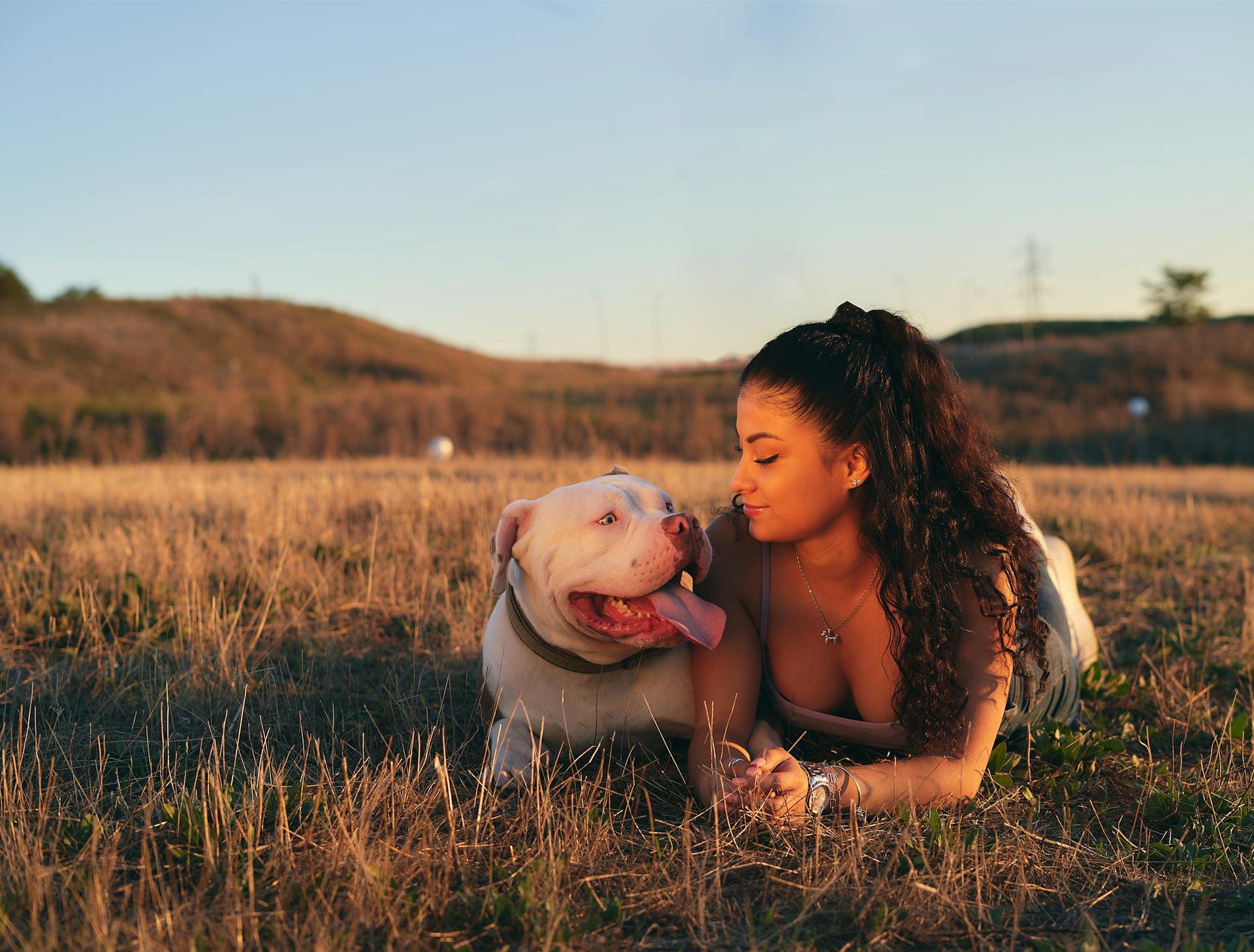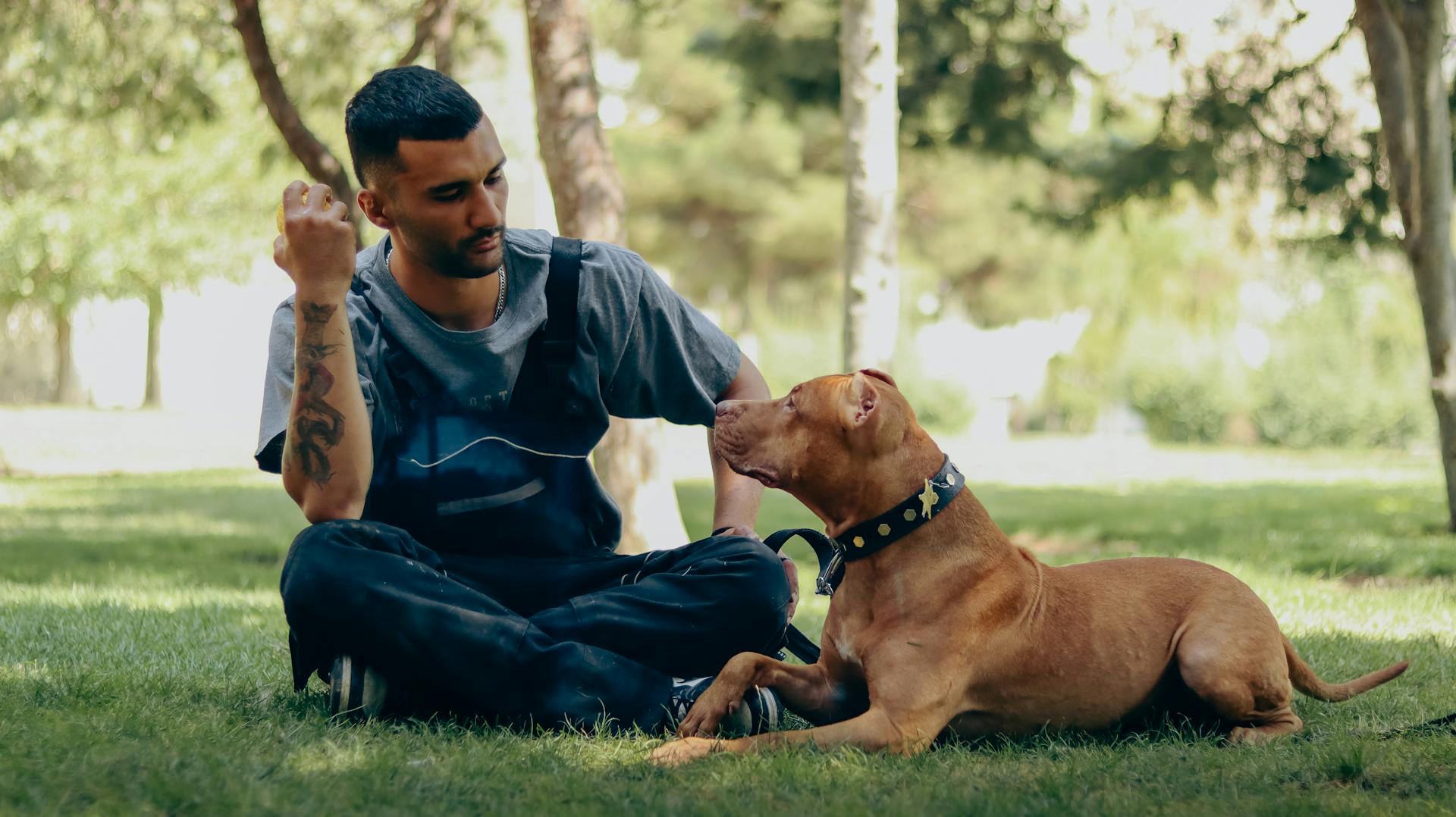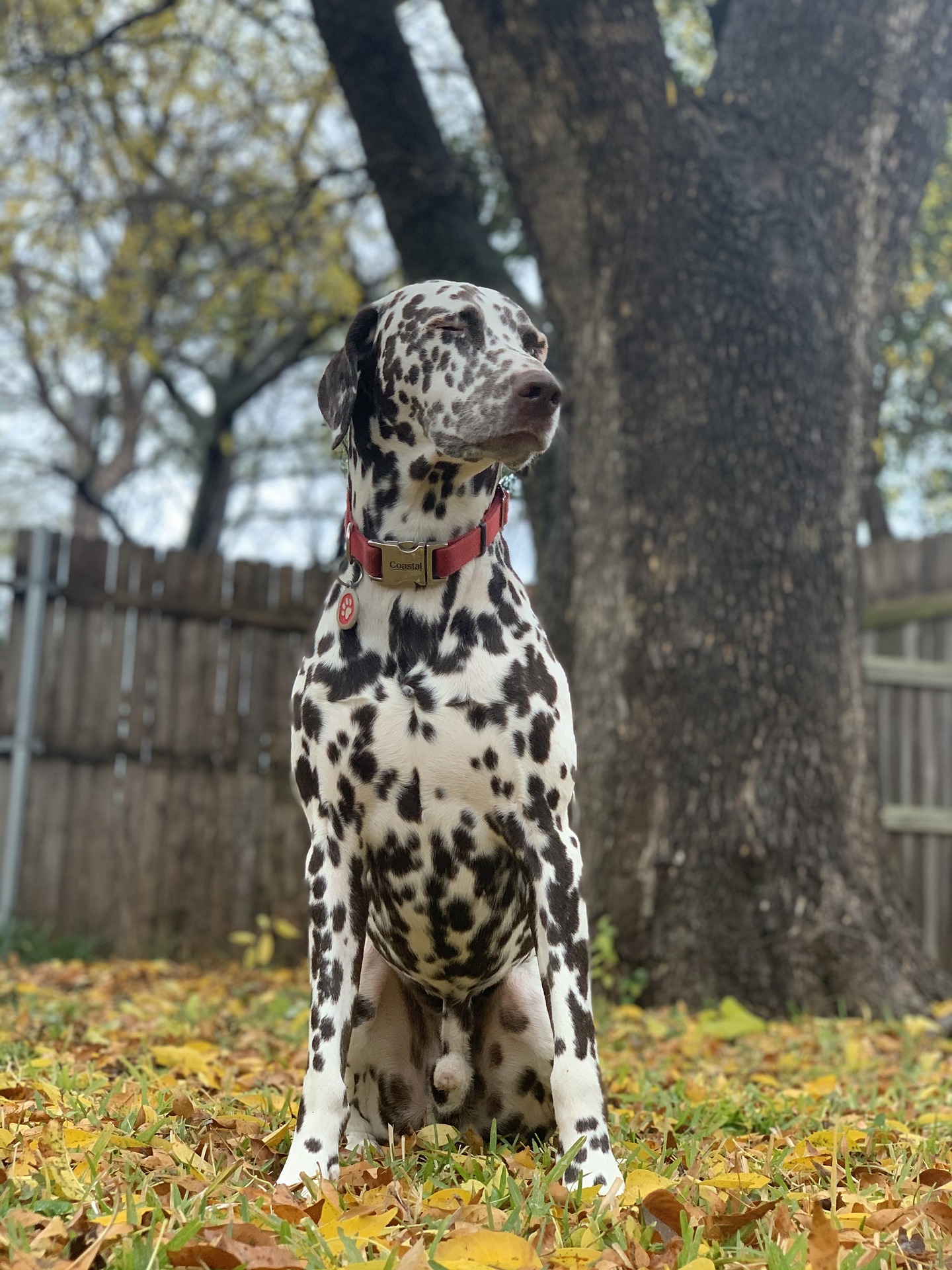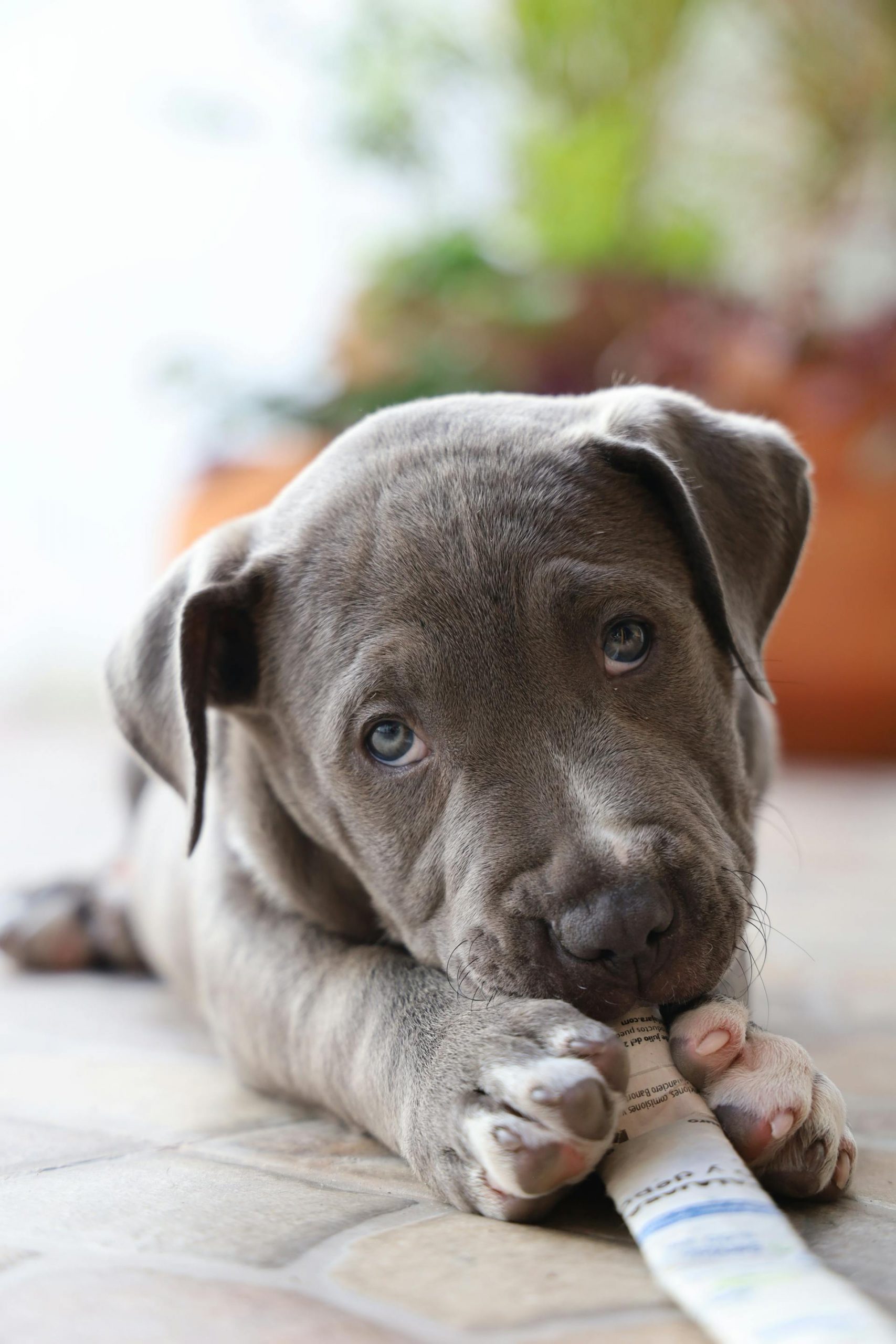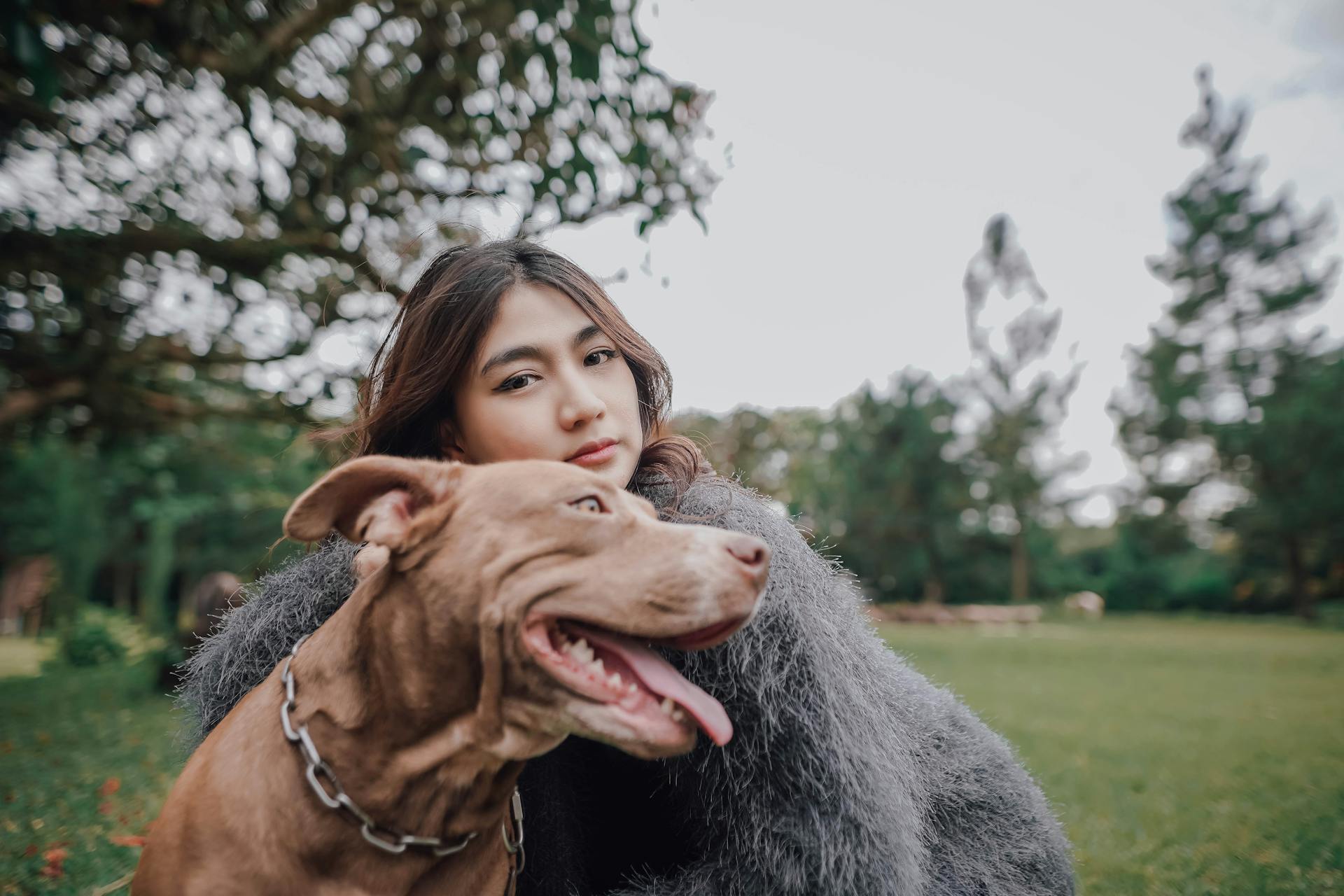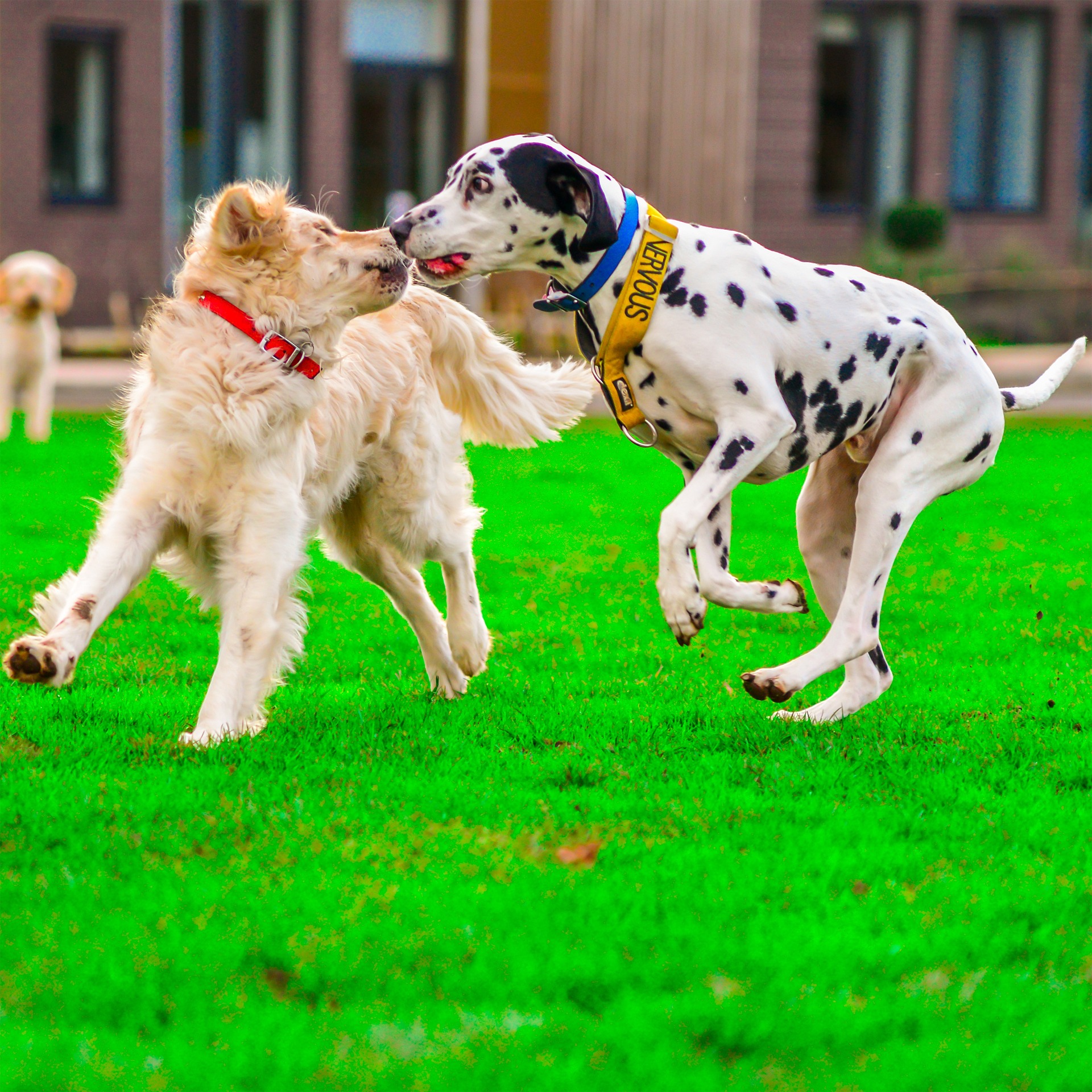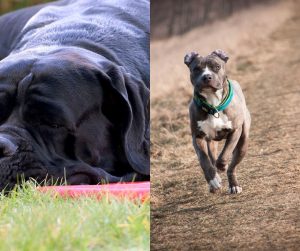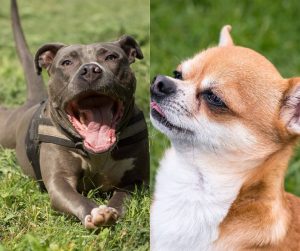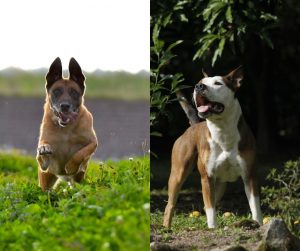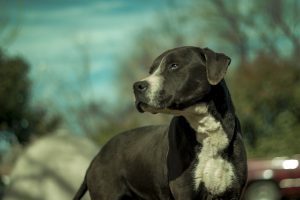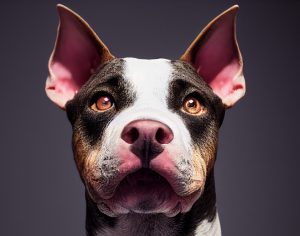When considering a new furry family member, many potential pet owners find themselves comparing different breeds to see which might best fit their lifestyle.
Every dog is a world unto itself, and breed is just one piece of the puzzle. After 30+ years with dogs, I understand this more than ever. If you’re intrigued by the Dalmatian’s spirit or the Pitbull’s devotion, let’s figure out which might truly thrive in your home.
Two popular breeds often weighed against each other are the Dalmatian vs Pitbull, each with its unique heritage and set of characteristics.
While Dalmatians are renowned for their distinctive spotted coat and historic role as carriage dogs, Pitbulls – a term often referring to several breeds including the American Pitbull Terrier – are known for their muscular build and unfairly misunderstood reputation.
Both dog breeds boast devoted followings thanks to their distinctive traits and personalities.
Dalmatians, with their high energy and endurance, make excellent exercise partners for active individuals. Meanwhile, Pitbulls often surprise with their affectionate nature, showing a special fondness for being close to their humans.
When selecting between these two, one must consider various factors, including physical characteristics like size and coat, temperament, and the levels of training and socialization they will require.
Proper care and maintenance, including health and wellness considerations, are crucial in bringing out the best in either a Dalmatian or a Pitbull.
Key Takeaways
-
- Dalmatians and Pitbulls are popular breeds with unique physical and personality traits
- Consideration of energy levels, temperament, and owner commitment is essential in choosing between them
- Responsible care, training, and understanding breed-specific health needs are critical for their wellbeing
Breed Origins
When we look back at the roots of the Dalmatian and the Pit Bull Terrier, we’re tracing a tale of two breeds, each with a distinct history and origin.
The Dalmatian hails from Croatia with a storied past as a carriage dog, while the Pit Bull Terrier has a mix of ancestries that resulted in the modern American Pit Bull Terrier, valued for its strength and companionship.
Dalmatian History
The Dalmatian’s beginnings are often linked to the historical region of Dalmatia in Croatia.
They’re known for their unique spotted coat and noble job as carriage dogs, striding alongside horse-drawn carriages.
In the mid-1800s, they began to emerge more prominently, acting not just as companions but as dogs with a purpose, often found working with fire-fighting equipment and horses due to their strong hunting instincts and the endurance they possessed.
Pit Bull Terrier Background
The storyline of the American Pit Bull Terrier is woven from a blend of breeds; primarily, it descended from the old English Bulldogs and terriers, combining their strengths for baiting and hunting. At one point in time, they were used for dog fighting. This is why the American Kennel Club is hesitant to recognize the breed. And why many people consider the Pitbull to be a dangerous dog.
These dogs were bred to be both strong and gentle, eventually giving rise to the Staffordshire Bull Terrier.
As they crossed the seas to America, they became known as American Pit Bull Terriers, dogs valued for their loyalty and tenacity, with a history that at times has been misunderstood but is intrinsic to America’s dog culture.
It is worth noting that the American Pitbull terrier is not recognized by the American Kennel Club. Instead, the AKC recognizes the Staffordshire terrier, and then uses the umbrella term pitbull to refer to American Bully, American Bulldog, American Pitbull, and American Staffy.
Physical Characteristics
When one thinks of Dalmatians and Pit Bull Terriers, distinct physical attributes come to mind: the Dalmatian’s iconic spots and the Pit Bull Terrier’s muscular frame. Let’s take a closer look at each breed’s appearance to see how they stand out on their own.
Dalmatian Appearance
Dalmatians are known for their white coats adorned with black or brown (liver) spots. This distinctive spotted coat has made them one of the most recognizable breeds.
They typically stand between 19 to 24 inches tall and weigh around 45 to 70 pounds.
Dalmatians have fairly long legs, and their ears are set high, hanging down beside their head, which adds to their alert and poised expression.
Pitbull Appearance
Pit Bull Terriers, while not a specific breed but a grouping of breeds, generally share a common appearance of a sturdy and muscular build.
Their weight can also range between 40 to 70 pounds, similar to Dalmatians, but they usually stand shorter at about 18 to 21 inches in height.
The coat of a Pit Bull Terrier is typically short and sleek, and while they can come in various colors, they don’t have the spotted pattern that Dalmatians do.
Comparing Builds
When comparing the two, one can see that both breeds share a similar weight range, but the Dalmatian usually carries a taller and leaner frame versus the Pit Bull Terrier’s shorter and more robust build.
Dalmatians’ lean muscle and endurance made them excellent carriage dogs, a job that required a combination of speed and stamina.
On the other hand, the build of Pit Bull Terriers speaks to their history of being working dogs that required strength and tenacity. Their muscular physique reflects their ability for high-energy tasks and strength-based roles.
Temperament and Personality
In the fascinating world of canine companions, the Dalmatian vs Pitbull Terrier dog breed bring unique and distinct personality traits to a family. Let’s discover what makes each of these breeds special in their own way and how they might blend in a family setting.
Dalmatian Disposition
The Dalmatian puppy is a breed bursting with energy and marked by a loyal and affectionate personality. Traditionally used as coach dogs, their history gives them a natural protective streak. Here’s what they are known for:
-
-
- Energy Level: High, they thrive on exercise and play
- Temperament: Friendly but can be reserved with strangers
- Family Relations: Loyal to their family and good with kids, but should be introduced to other pets early
- Stubbornness: Can be independent, which may come off as stubborn without consistent training
-
Pitbull Character
Pitbull Terrier dogs, often enveloped by misconceptions, are, in fact, affectionate and loving toward their dog owners. They show an enthusiastic zest for life and are eager to please. Their character traits include:
-
-
- Energy Level: Robust and full of spirit; they need regular physical activity
- Temperament: Generally warm and friendly, especially when socialized well
- Family Relations: Known to be especially affectionate with kids and often protective of their family
- Stubbornness: They may show a strong-willed nature but respond well to positive reinforcement training
-
Inter-breed Behavioral Traits
When considering a Dalmatian Pitbull mix, one might wonder how the temperaments of these two breeds blend. Such a mix would likely result in a dog that is:
-
-
- Energetic but manageable, with proper training and exercise
- Social and loyal, potentially a great family pet if they inherit the best of both worlds
- Protective, with a natural inclination to watch over their family
-
Training and Socialization
When it comes to training and socialization, the key for both Dalmatians and Pit Bull Terriers is starting early and using consistent, positive reinforcement methods. They’re intelligent breeds that thrive with attention and require dedicated time for training and socialization to ensure they’re well-behaved and sociable.
Dalmatian Coaching Tips
Dalmatians are renowned for their intelligence and eagerness to please, which can make training a rewarding experience. They respond well to:
-
-
- Positive reinforcement, such as treats and praise, to encourage good behavior
- Early socialization, encompassing exposure to various people, sounds, environments, and experiences to promote a well-rounded temperament
-
Pit Bull Obedience Guidance
Pit Bull Terriers, cherished for their loyalty and affection, also benefit greatly from:
-
-
- Firm, consistent obedience training to establish clear rules and structure
- Socialization that includes interaction with other dogs and people to foster friendly behavior and reduce the chance of aggression
-
Managing Mixed Breed Behavior
When training a Dalmatian Pit Bull mix, it’s important to consider the combined traits from both breeds. Owners should:
-
-
- Start training and socialization from a young age to take advantage of their receptiveness to learning
- Provide ample mental and physical stimulation to manage their high energy levels and prevent the development of unwanted behavior
-
Health and Wellness
When it comes to the health and longevity of Dalmatians and Pit Bulls, each breed comes with its specific concerns.
Dalmatian Health Concerns
Dalmatians can be prone to certain health issues. One of the most well-known is deafness, which can affect many Dalmatians to some degree.
Another common health concern in the breed is hip dysplasia, a joint condition that can lead to discomfort and mobility problems.
They are also predisposed to form urinary stones, making monitoring their diet and hydration critical.
-
-
- Deafness: Prevalent
- Hip Dysplasia: Possible
- Urinary Stones: At Risk
-
Pit Bull Health Issues
Pit Bulls are a robust breed but they’re subject to specific health conditions.
Allergies, whether environmental or food-related, are common and can cause a range of symptoms from skin irritation to gastrointestinal discomfort.
Additionally, while they generally have less risk of hip dysplasia than Dalmatians, they can still encounter it.
Knowing the lifespan of a Pit Bull is also beneficial; they typically live between 12 to 16 years with proper care.
-
-
- Allergies: Common
- Hip Dysplasia: Less Common
- Lifespan: 12-16 years
-
Mix Breed Health
Mixing breeds can lead to a healthier offspring but it’s not a guarantee. With a mix like the Pitmatian (a cross between a Pit Bull and a Dalmatian breed), one must take into account the health concerns from both parent breeds.
They can inherit the predisposition for deafness and urinary stones from the Dalmatian side and the tendency for allergies from the Pit Bull side. Potential owners need to be aware of these issues to provide the best care for their pet.
-
-
- Deafness: Inherited Possibility
- Urinary Stones: Potential Risk
- Allergies: Inherited Probability
-
Care and Maintenance
Caring for either a Dalmatian dog or a Pit Bull Terrier puppy requires attention to their distinct needs in terms of grooming, diet, and exercise. Understanding these needs is crucial, especially when these breeds are combined in the Pitbull Dalmatian mix.
Dalmatian Grooming and Diet
Dalmatians are known for their unique coat with distinctive spots. They require regular grooming to keep their coat in good condition and to minimize shedding.
Brushing a couple of times a week with a medium-bristle brush, a rubber grooming mitt or tool, or a hound glove will help to remove dead hair and distribute skin oils.
Their diet should be well-balanced, as Dalmatians can be prone to urinary stones and may have unique nutritional requirements to prevent this condition.
They may also have skin allergies, so it’s essential to watch for any signs of irritation. Here’s a basic diet guideline for Dalmatians:
-
-
- Protein: High-quality protein should be the main component
- Fats: Essential for energy, but must be balanced with overall diet to prevent obesity
- Carbohydrates: Moderate level, to provide fiber and energy
- Minerals: Such as calcium and phosphorus for bone health
- Vitamins: Ensure a variety of vitamins from fruits and vegetables
-
Pit Bull Exercise and Nutrition
Pit Bulls are energetic dogs that require ample exercise to maintain their muscle tone and to manage their energy levels.
A daily exercise routine should include:
-
-
- Physical activities: Such as running, fetch, and agility exercises
- Mental stimulation: Obedience training or interactive games
-
Nutrition is equally essential. A balanced diet for a Pit Bull should support their active lifestyle. Meal plans should include:
-
-
- Proteins: Essential for muscle development and repair
- Fats: Provide energy and help maintain healthy skin and coat
- Carbs: Necessary for energy but should be given in proportion to avoid weight gain
- Omega Fatty Acids: To support joint health and mobility
-
Caring for a Dalmatian Pitbull Mix
Owners of a Pitbull Dalmatian mix face unique challenges since the needs of both breeds must be met.
Exercise levels should be consistent with the requirements of both breeds, which means:
-
-
- Daily exercise: Aim for at least an hour of physical activity
- Mental engagement: Training exercises and puzzles to keep their minds sharp
-
In terms of grooming, these mixes often inherit the Dalmatian’s short coat, which will benefit from regular brushing.
Monitor their skin for signs of allergies or irritation and consult a vet for a tailored diet plan that addresses the potential for urinary stones as well as the energy needs of an active dog.
Adoption and Ownership
When considering adding a four-legged member to the family, understanding the commitments involved in adopting a Dalmatian or a Pitbull is essential. Both breeds present unique characteristics and offer different experiences in companionship and care.
The Decision to Adopt
Adopting a dog is a rewarding and life-changing event. Dalmatians and Pitbull breeds are known for their loyalty and friendly nature, making them excellent family pets.
However, they come with different needs and potential challenges. Families must evaluate their lifestyle, space, and time availability before deciding.
It’s not just about finding a loyal companion; it’s about ensuring a forever home filled with love and responsibility.
Understanding Pitbull Breeds
As I said before, the term “Pitbull” refers to several breeds, including the American Bully, American Bulldog and the American Staffordshire Terrier. These dog breeds often share traits such as strength, confidence, and a deep sense of loyalty toward their family.
It’s crucial to dispel myths and appreciate their friendly demeanor. Before adopting, one should research and understand the breed-specific legislation (BSL) in their area, as some regions have restrictions on owning these powerful dogs.
Life with a Dalmatian
Dalmatians are intelligent, energetic dogs with a storied past as carriage dogs.
Their spotted coat is iconic, and they typically have a friendly disposition.
Owning a Dalmatian means committing to plenty of exercise and mental stimulation to keep them healthy and content.
They’re a social breed, thriving in an environment where they can be part of daily family activities.
These dogs are not just pets; they’re integrated members of one’s household.

